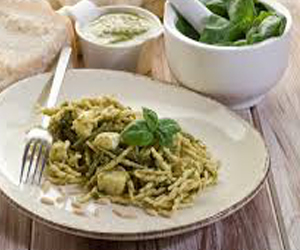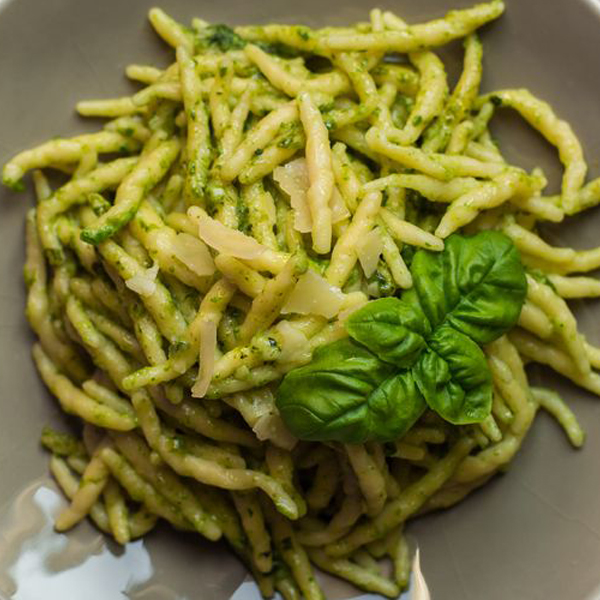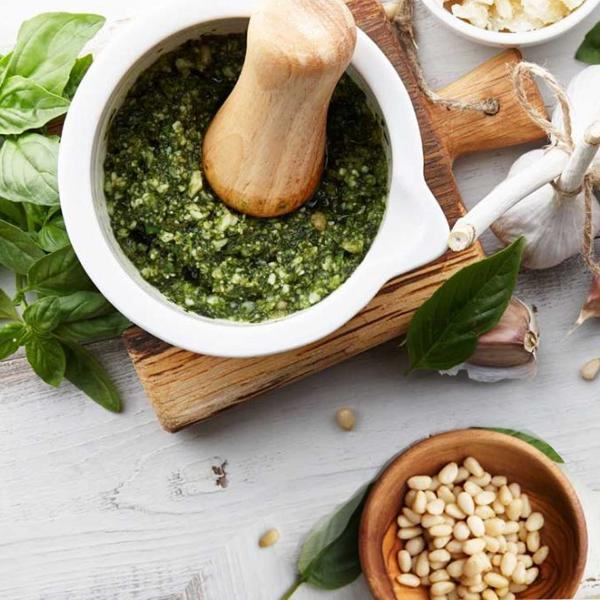Trofie, an ancient pasta
The recipe for trofie is typical of traditional Ligurian cuisine.
The basic dough is prepared with durum wheat semolina, water and salt.
Trofie are a pasta that Ligurian women have always made at home, thanks to the fact that only three ingredients are needed to prepare them: water, semolina and salt.
Trying to make them at home gives, as always, a very particular taste.
The combinations for seasoning and recipes with trofie, then, are many: in addition to the classic pesto, you can add green beans and potatoes, but also cherry tomatoes, zucchini, and other vegetables.

Ingredients:
• 400 g of re-milled durum wheat semolina
• about 250 ml of water
• 1 pinch of salt
For 6 people:

The recipe for homemade trofie
Start by putting the flour in a large bowl with the salt, add the water a little at a time while you knead.
Knead with your hands until you get a compact and firm dough.
Cover with a clean tea towel and leave to rest out of the refrigerator for 30 minutes, after which pick up the dough and work vigorously.
Then remove some pieces as big as a marble and with the palm of your hand roll the pieces of pasta on the pastry board, obtaining twisted dumplings, with the thinner ends of the central part.
Continue in this way until you finish the dough at your disposal.
Throw them in a pot with boiling water and salt and let them cook for 4 minutes and then drain them, keeping a little cooking water, which you will need to dilute the pesto.

Once, their particular and elongated shape was obtained with a wooden knitting needle, along which a piece of dough was rolled which was then crushed with the palm of the hand. Now the production is mostly industrial, with special machinery.


Semolina, not flour
The recipe for homemade trofie involves the use of semolina and not flour.
But what difference is there between the two? And how do they recognize each other?
Flour is the result of the grinding of soft wheat, while the semolina derives from the grinding of durum wheat.
The former has a more rounded shape and a more friable consistency, durum wheat, on the other hand, has a more elongated shape and is, in fact, harder. Even the flours that derive from these two grains show some differences: the first has a whiter color and is softer to the touch, the second instead has a more yellow color and is more grainy.

To stay true to tradition, we recommend dressing the trophies with a delicious homemade basil pesto.
The recipe and the ingredients are in the article:
https://www.welcometigullio.it/2020/03/17/il-pesto/


